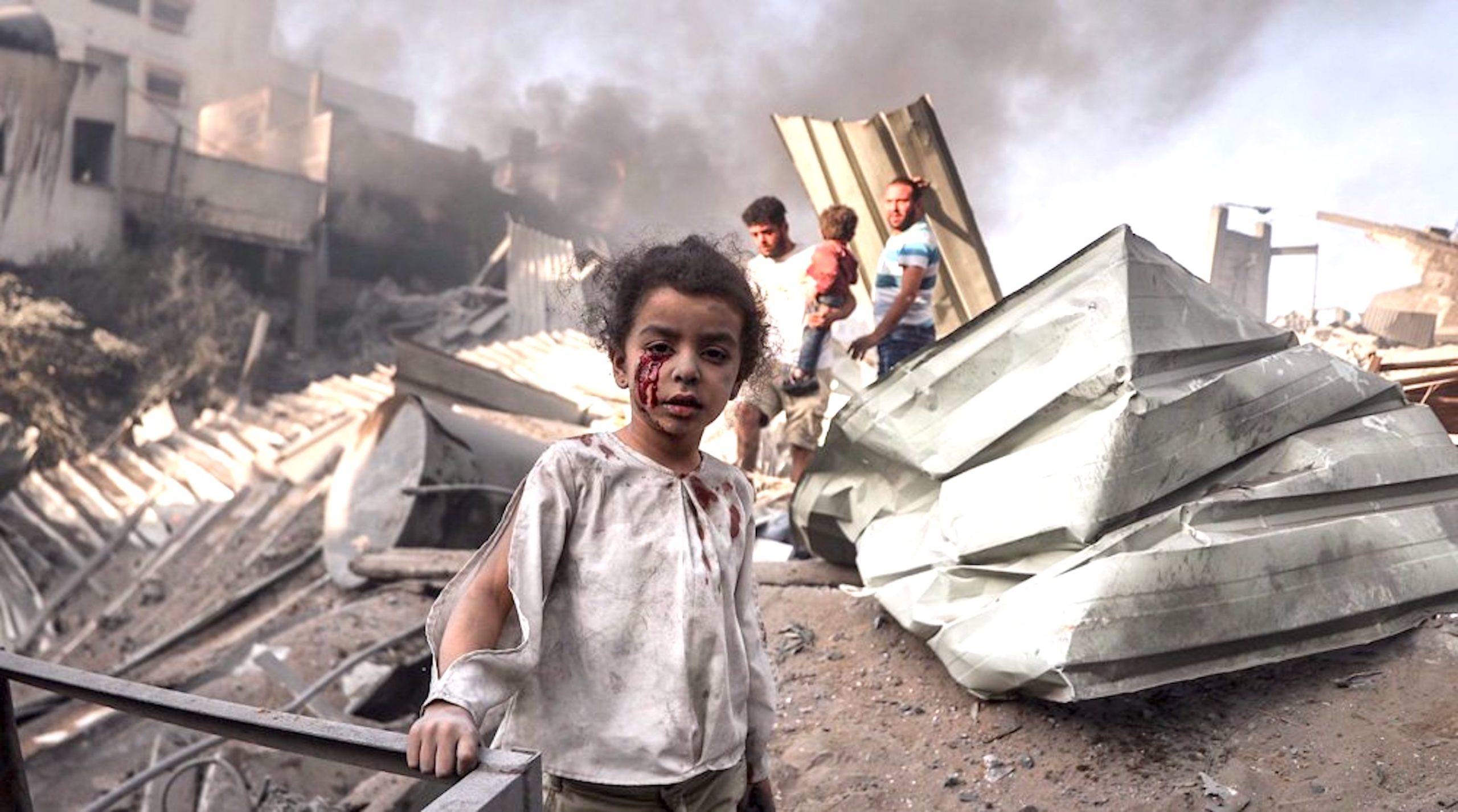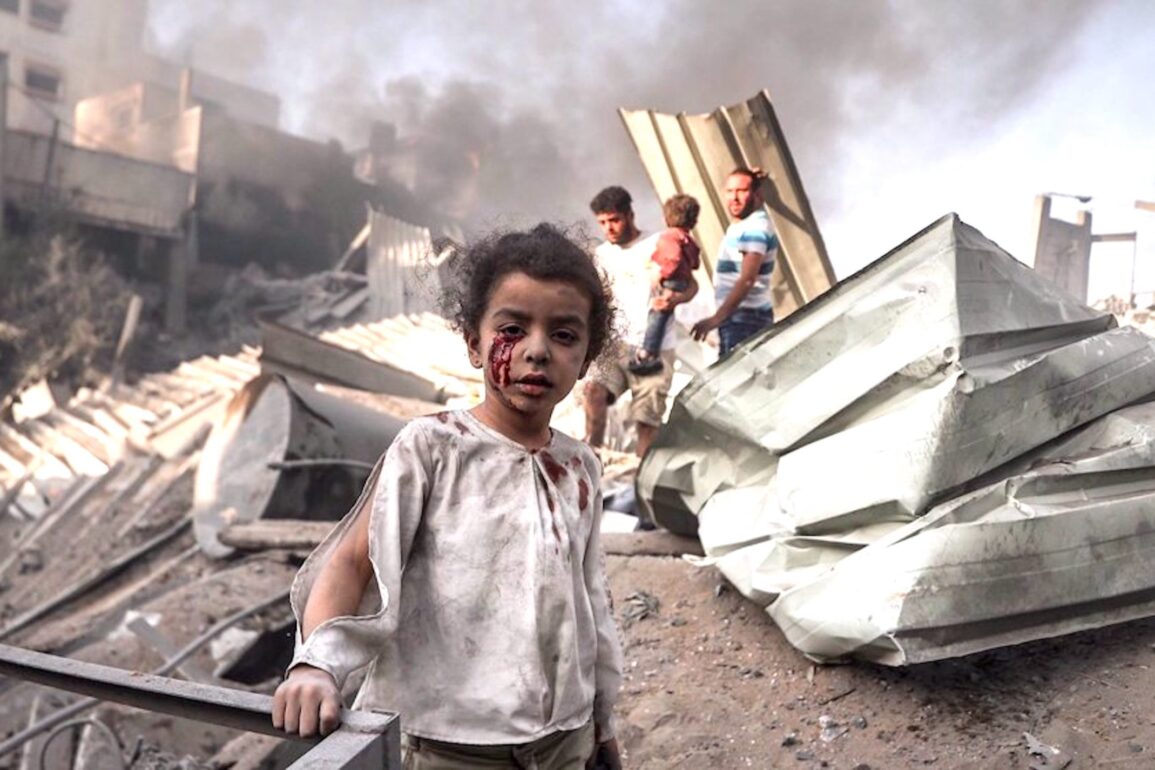
Photo courtesy of Press TV
“The horror of war spares no human soul; it is the innocent children who bear the ultimate burden.”
Children have always been the most vulnerable and innocent casualties of any conflict. Past conflicts have had a devastating impact on children’s lives and ongoing conflicts continue to perpetuate their suffering. The UN has made efforts to protect children in conflict zones but its effectiveness has been limited due to the misuse of the veto system and geopolitical games. Children have undergone immense suffering, both physically and psychologically, due to wars and conflicts.
Conflicts and child victims
Over the past century, numerous wars and conflicts have resulted in the loss of innocent lives with children being significantly impacted. World War I (1914-1918) witnessed the deaths of approximately 1.6 million children due to direct combat, bombings and starvation. World War II (1939-1945) proved even more devastating with an estimated six million children losing their lives.
Beyond the world wars, there were conflicts such as the Korean War (1950-1953), the Vietnam War (1955 -1975) and the Rwandan genocide (April-July 1994). The effects of these conflicts on children were devastating. The Korean War, for example, resulted in the deaths of around 500,000 children. The Vietnam War was no different, with an estimated two million child casualties. The Rwandan genocide specifically targeted children, resulting in the death of approximately 500,000 children in just 100 days.
Countries such as Afghanistan, the Central African Republic, Ethiopia, Libya, Mali, Somalia, South Sudan and Syria are all currently experiencing civil conflicts, resulting in significant casualties and displacement among the general population. Unfortunately, children are the most vulnerable during times of conflict and suffer disproportionately from the effects of civil wars.
Israeli-Palestinian conflict
The ongoing Israeli-Palestinian conflict has had severe and long lasting consequences on the lives of children living in the region. UN Secretary General António Guterres pointed out that Gaza was becoming a graveyard for children. More than 15,200 people, including about 6,000 children, have been killed in Israel’s assault on the Gaza Strip since the war began. As a result of the conflict, children on both sides have suffered physical and psychological trauma, educational disruptions and limited access to their basic need, such as healthcare and clean water. The cycle of violence and instability perpetuated by the conflict has denied these children their right to a peaceful and secure childhood, leaving a lasting impact on their lives.
According to the UN, over the past two decades, thousands of children have been killed or injured in the clashes. The constant fear of bombings, shootings and airstrikes has left children traumatised, leading to long term psychological distress and difficulties in coping with daily life. The loss of family members and friends due to the conflict further exacerbates their emotional burden, often resulting in depression, anxiety, and post-traumatic stress disorder.
Consequences of children in civil conflicts
One of the most devastating impacts of civil wars on children is the high number of casualties. Conflict zones are bursting with violence, bombings and armed clashes that put children’s lives at risk. They often become victims of direct attacks or get caught in crossfire, which leads to death or severe injuries. Children are also subject to psychological trauma, witnessing and experiencing violence, displacement, separation from their families and the loss of loved ones. The disruptions of essential services such as healthcare, education and nutrition further exacerbate their suffering, leading to malnutrition, disease and limited access to education. This compromises their physical and mental development, exposing them to preventable diseases, resulting in high infant and child mortality rates.
Another common impact of war is disability, which can easily affect children in various ways. They may be exposed to airstrikes, explosions, gunfire and bombings, which can result in physical injuries resulting in amputations, burns or spinal cord injuries. Additionally, when caught up in crossfire or intentionally targeted, children can suffer permanent disabilities or even lose their lives. Moreover, the psychological trauma endured during war can also lead to various disabilities as the stress and fear experienced can have long-lasting effects on a child’s mental health.
Civil wars also lead to mass displacement, forcing families to flee their homes and seek safety in overcrowded displacement camps or neighbouring countries. These living conditions are often inadequate, with limited access to basic needs. Children in displacement camps are particularly vulnerable to exploitation, abuse and trafficking. The loss of stability, familiar surroundings and support networks also have a profound impact on their emotional well-being, leading to increased levels of stress, anxiety and trauma.
What can child protection organisations do?
Child protection organisations play a crucial role in advocating for the rights and well-being of children affected by conflicts. They provide direct support to children and their families, including psychosocial counselling, emergency assistance and protection services. These organisations also engage in awareness-raising, lobbying governments and international bodies and conducting research to inform policy and programming interventions.
The destruction of infrastructure and ongoing violence makes it difficult for humanitarian organisations to provide sufficient aid to the affected areas. As a result, children often lack access to proper medical care, leading to higher rates of illness and preventable deaths. Limited access to clean water and sanitation facilities also increases the risk of waterborne disease, further compromising their health and well-being.
UN efforts and failures
The UN, through various agencies and mechanisms has made efforts to protect children in conflict zones. The Convention on the Rights of the Child (CRC), adopted in 1989, sets out the rights of children and calls for their protection in all circumstances. The UN Security Council has also taken steps to address the issue of child protection in conflicts, including the establishment of child protection mandates and the inclusion of child protection provisions in peacekeeping operations.
However, the UN’s efforts have not always been successful. The UN Security Council’s permanent members’ veto power has frequently impeded effective action. For example, in the Syrian conflict, the repeated use of the veto by Russia and China has prevented resolutions that sought to hold perpetrators accountable for grave violations against children. This has perpetuated the suffering of children in conflict.
International obligations to protect children in conflict situations
The protection of children in conflict situations is a significant international obligation. Warring parties must adhere to international humanitarian law, which prohibits attacks on civilians and emphasises the principle of distinction, ensuring children are not targeted. Countries should ratify and implement international conventions such as the CRC and the Optional Protocols to the CRC, integrating them into national laws and policies.
National governments, with support from international organisations, should establish child protection mechanisms in conflict affected areas. These mechanisms should include child friendly reporting channels, safe spaces for children and trained personnel to provide psychosocial support. Access to education should be ensured for affected children with the implementation of temporary learning spaces with trained teachers and provisions for psychosocial support should be made available. Parties involved in conflicts should allow safe and unhindered access for humanitarian organisations to help children and their families.
Efforts should be made to disarm and demobilise child soldiers, providing them with psychosocial support, education, vocational training, and opportunities for reintegration into society. Perpetrators of grave violations against children should be held accountable at the International Court of Justice and the International Criminal Court.
Additionally, the international community should advocate for the establishment and support of early warning systems at civilian level. These systems could prevent violent conflicts by detecting and addressing potential triggers or tensions before they escalate. Sustainable peace building initiatives should be promoted to address both the immediate consequences and underlying root causes of conflicts. Transitional justice mechanisms must be emphasised to ensure accountability for human rights abuses and atrocities, contributing to reconciliation and healing in post conflict societies.
Fostering empathy and peace amid conflict
The ongoing conflicts and their consequences for children have also perpetuated a cycle of rage, revenge and hopelessness. Growing up in an environment characterised by violence and hostility hinders the development of empathy and peaceful conflict resolution skills. Children who witness or experience violence are more likely to become radicalised and seek revenge, perpetuating the cycle of violence for future generations.
Addressing the consequences of the conflict for children requires a multifaceted approach. Immediate steps must be taken to ensure the protection of children during times of conflict including strict adherence to international humanitarian law. Adequate support and resources should be provided to address the psychological trauma and emotional needs of affected children. Efforts should also be made to rebuild and improve water, sanitation, education and healthcare infrastructure, ensuring that children have access to quality education and essential services. Additionally, efforts must be made to promote peace and reconciliation, fostering a culture of dialogue and understanding among children from both sides of the conflict.
This post was originally published on this site be sure to check out more of their content.









